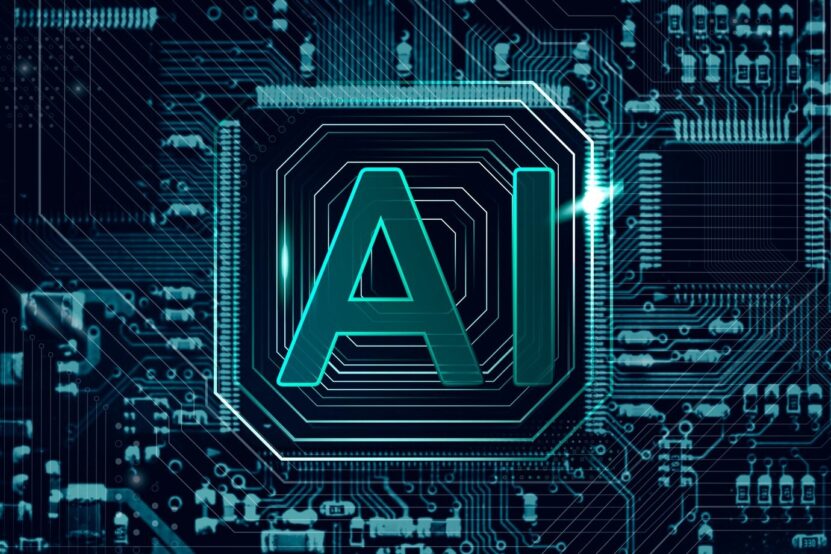Identifying AI-generated content has become increasingly relevant. As technology advances, differentiating between human-created writing and machine-produced output can be tricky.
Many individuals and professionals need to sharpen their skills to quickly spot this content, which can carry significant consequences. For instance, using generated work in academic or professional settings without proper citation may lead to misunderstandings or ethical concerns.
You may find yourself reading a piece of writing and wondering if it’s human-made or not. Learning how to spot AI-generated material is an important skill, especially when authenticity matters.
Key Points:
- Recognize structural clues in writing
- Focus on repetitive patterns
- Pay attention to unnatural phrases
- Use detectors to verify suspicions
- Watch out for inconsistency in tone
Using Detectors

When suspicions arise, using tools can provide the confirmation you need. If you sense that a piece of writing was generated by AI, running it through a ChatGPT detector like ZeroGPT, can provide a reliable assessment. These tools are trained to pick up on subtle clues in the text, even when human detection falls short.
This detector operates by analyzing multiple factors, such as vocabulary and sentence structure, to predict whether the writing is human-made or not. It minimizes false positives by thoroughly evaluating content, providing a helpful second layer of verification.
Look for Unnatural Structure in Writing
AI-generated text often follows a rigid and predictable structure. Sentences might seem grammatically correct but lack the natural flow that human writing tends to have. Content might seem overly polished or too neatly organized, which can make it feel robotic.
Pay attention to sentence length and variation. Machines often produce repetitive lengths and patterns, which you would not expect from a human writer.
You can also spot clues when transitions between ideas don’t feel smooth. AI often generates sentences without nuance, resulting in content that feels less coherent. If the connection between points seems forced or mechanical, that could indicate automation.
Repetition and Overuse of Phrases
AI-generated work tends to repeat key phrases in a way that feels unnatural. Machines often rely on certain patterns, which can lead to a recurrence of similar words or expressions. If you notice the same phrase cropping up multiple times without much variation, it may be a sign of automated output.
Human writers are less likely to repeat themselves this often. Machines, however, follow algorithms that might recycle language to meet word counts or stretch content. Paying attention to redundant phrases can help identify AI-generated material quickly.
Unnatural Word Choices
Automated systems sometimes choose words that don’t fit well within a specific context. Although the sentence might make grammatical sense, the chosen vocabulary may feel off or misplaced. Often, AI struggles to capture nuance, resulting in awkward wording that a human would easily avoid.
For instance, AI might use formal language in casual settings or the opposite, breaking the natural tone of writing. Reading with a critical eye for these unusual choices can reveal if the content was likely machine-generated.
Inconsistent Tone

Human writers typically maintain a consistent tone throughout a piece of writing. Machines, on the other hand, can produce sections that feel detached or inconsistent in tone. Shifts between formal and informal language without reason are strong indicators that you may be reading AI-generated material.
Tone changes may also manifest in wordiness or abrupt changes in the writing style. If a piece starts with a conversational tone but then shifts to overly formal or awkward wording, it might not be from a human writer. Spotting these inconsistencies helps you identify AI involvement.
Look for Overly Neutral Writing
AI tends to create content that sits in a neutral space without taking any definitive stance. The machine’s lack of personal experience or emotional insight often leads to writing that feels flat or lacking depth. Human writers typically express opinions or bring personality into their work, which gives their writing a distinct voice.
If the writing feels overly generic or detached, it might have been created by a machine. Machines are less capable of producing subjective viewpoints or nuanced interpretations, and instead generate content that feels neutral and uninspired.
Focus on the Complexity of Ideas
Another method for identifying AI-generated material is to focus on how the ideas are developed. Machines can struggle with complex thought processes or abstract reasoning. While they might generate coherent sentences, they often lack the depth that human writers bring.
If a piece seems to state basic facts or surface-level information without going into deeper analysis, it could indicate automated output. Human writers usually expand on their points, offering different perspectives or drawing from personal experience, something AI cannot replicate.
Watch for Sudden or Abrupt Endings
AI-generated text sometimes ends abruptly or without proper closure. Human writers naturally know how to wrap up their points or offer a conclusion. Machines, however, may suddenly stop or present an ending that doesn’t quite fit with the rest of the content.
This abruptness can disrupt the flow of the text and leaves readers feeling unsatisfied. When a conclusion feels forced or unfinished, it could be an indicator that the writing wasn’t crafted by a human.
Use Your Judgment

With the rise of AI-generated content, relying on tools alone isn’t enough. Training yourself to identify patterns and clues in writing will always be important. Machines have their limitations, especially when it comes to nuance, tone, and creativity. Pay attention to detail, watch for inconsistencies, and don’t be afraid to trust your instincts when assessing writing.
When in doubt, run the content through a detector for peace of mind. By combining observation skills with technology, you’ll be able to confidently determine the origin of any writing you come across.
Conclusion
Identifying AI-generated writing requires a mix of observation and tool usage. Look for unnatural structure, repeated phrases, awkward word choices, and abrupt endings. Watch for shifts in tone or neutral writing that lacks depth.
When suspicions arise, using detectors can provide the final answer. With these skills, you’ll be able to spot automated content quickly and accurately, ensuring you stay informed and prepared in any situation.
By sharpening your ability to analyze writing, you become less reliant on external tools and more confident in your judgment. Whether for academic purposes, work, or personal use, being able to identify AI-generated writing is an important skill.

